Chronology of the collection
1916 1920 1930 1940 1950 1960 1970 1980 2020
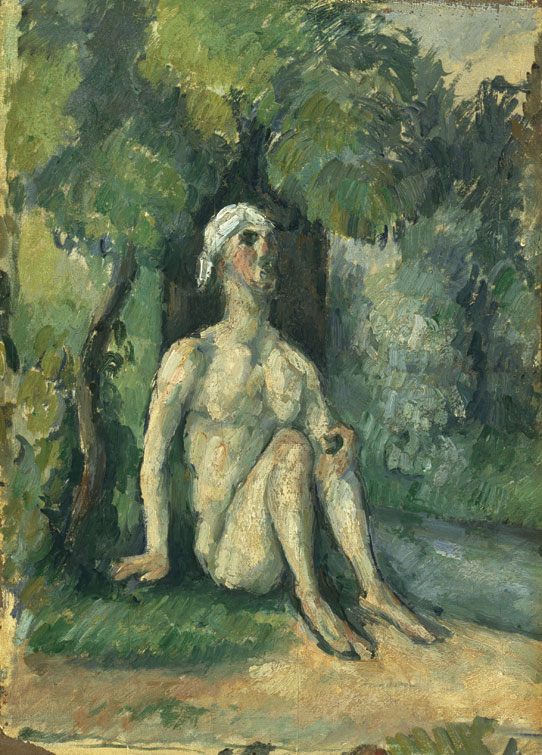
1934
Paul Cézanne, Baigneur assis au bord de l’eau, um 1876. In August 1936 the Kunsthalle Basel put on a Cézanne exhibition, for which Im Obersteg lent the painting that he had bought between 1930 and the end of 1934 at Galerie Paul Guillaume in Paris.
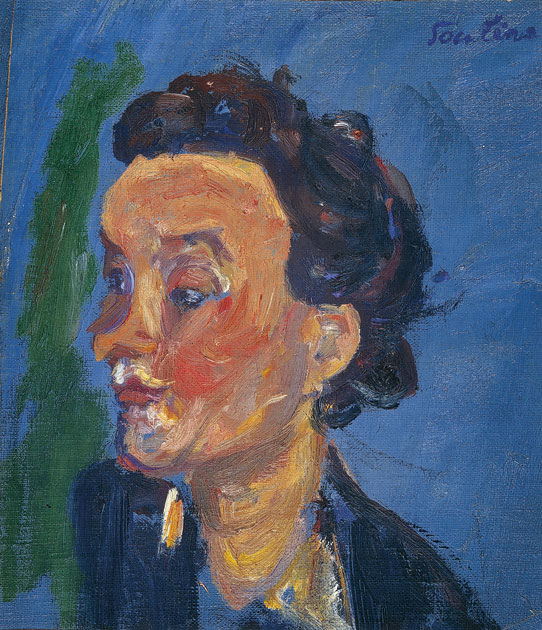
Chaïm Soutine, La jeune anglaise en bleu, before 1931; bougth at the Galerie Zborowski, Paris
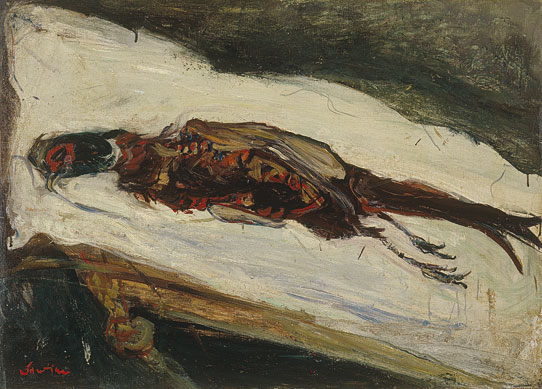
Chaïm Soutine, Le faisan mort, um 1926/27; probably bought at the Galerie van Leer, Paris.
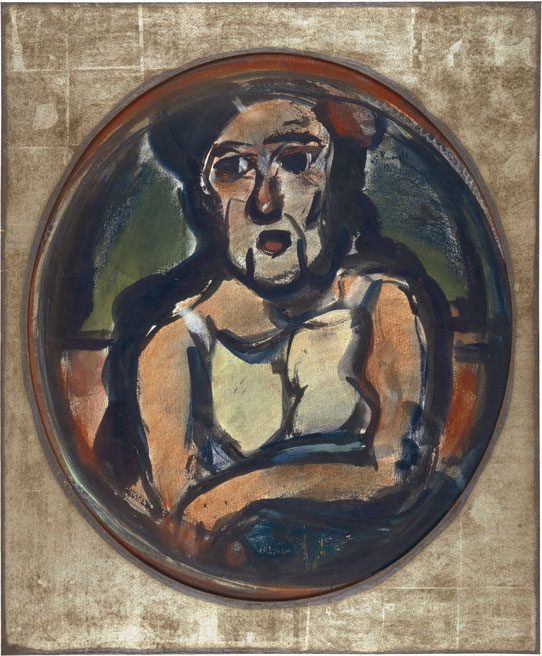
Georges Rouault, Ouvrière, 1911; bought at the Galerie Paul Guillaume, Paris.
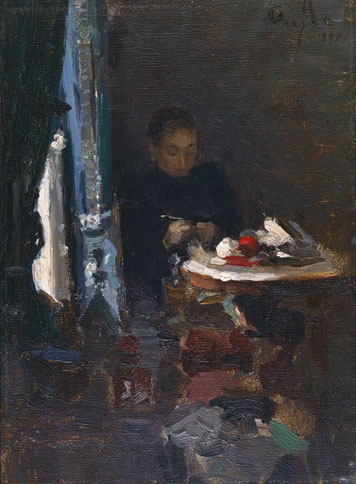
Alexej von Jawlensky, Die Mutter des Künstlers, 1890; bought from the artist. It is the earliest of the painter’s known and preserved works dated as early as his first student years in St. Petersburg.
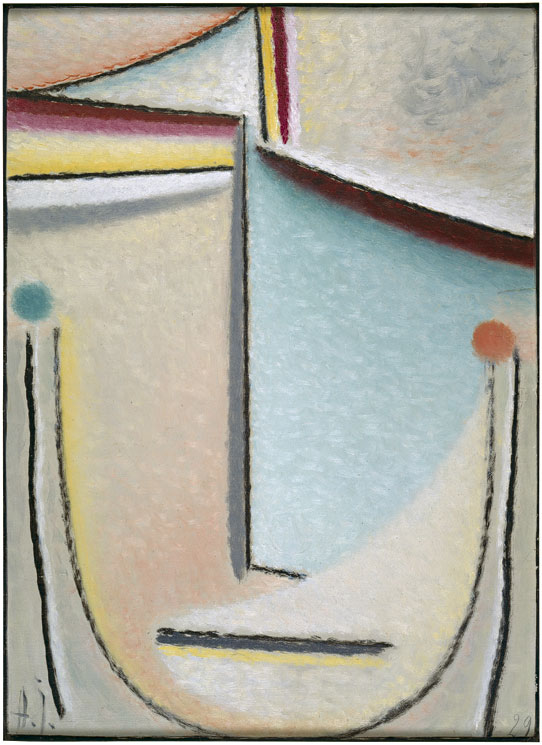
Alexej von Jawlensky, Abstrakter Kopf: Rosa-Hellblau, 1929; gift from the artist with a dedication on the back: “To Mr. Karl Im Obersteg with honor and love, A. Jawlensky”.
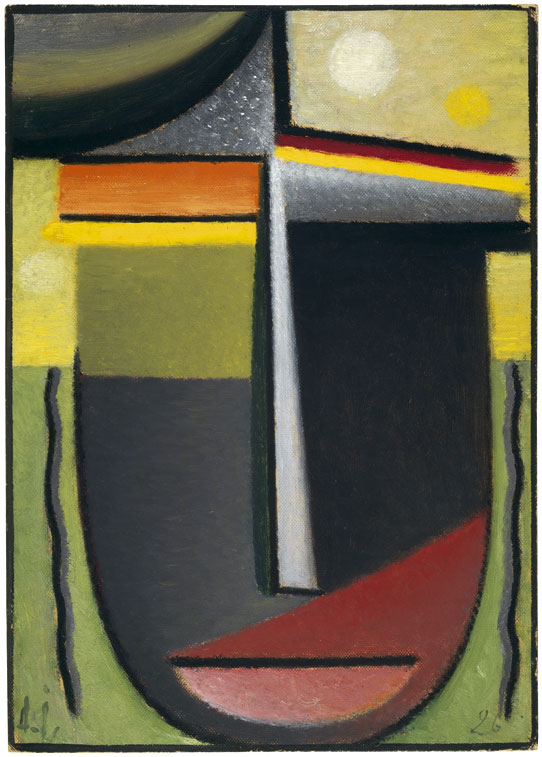
Alexej von Jawlensky, Abstrakter Kopf: Inneres Schauen Grün-Gold, 1926; artist’s Christmas gift to Karl and Marianne Im Obersteg. On the back of the picture Jawlensky wrote: “Dear friends: it seems to me that this work is better than the one hanging next to Klee’s. A Christmas greeting A. Jawlensky». Jawlensky, who visited his Swiss friends from time to time, knew how the pictures were hung in the Im Obersteg house and it was important to him to be represented next to his valued friend, Paul Klee, with a highly qualified work.
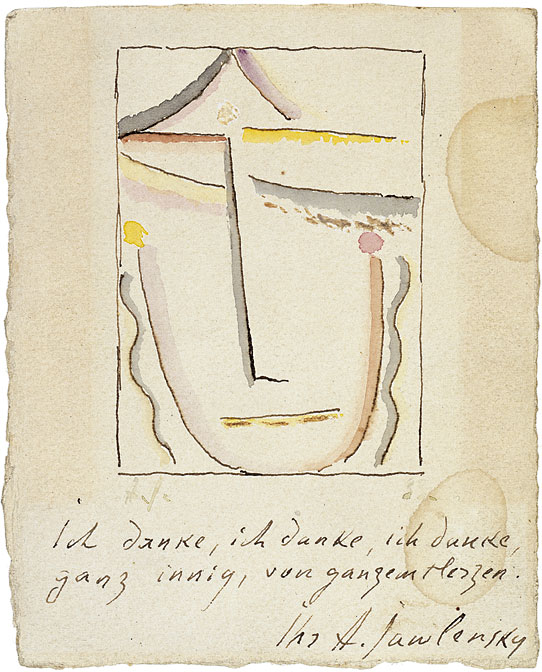
Alexej von Jawlensky, Kleiner Abstrakter Kopf(from the guest book of the Im Obersteg family), 1933; gift from the artist.
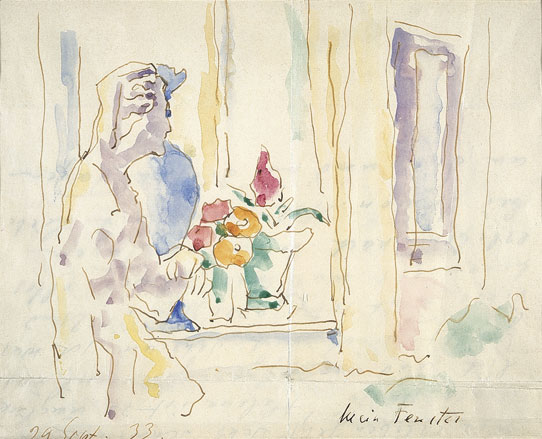
Alexej von Jawlensky, Mein Fenster, 1933; watercolor on the letter the artist wrote to Marianne Im Obersteg on 29 September 1933. Jawlensky was also a friend to Marianne Im Obersteg. Both of them shared the same fate of suffering from a serious illness.
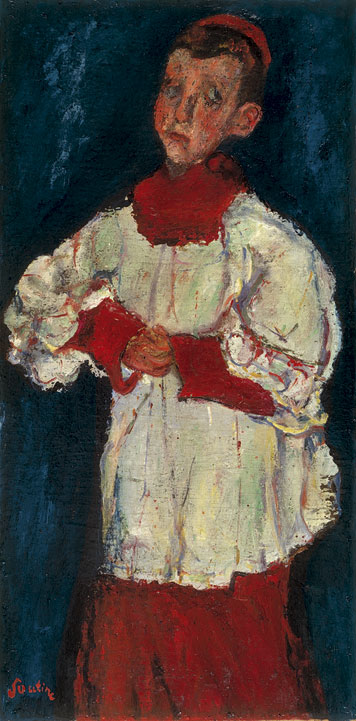
Chaïm Soutine, L'enfant de choeur, um 1927; bought at the Galerie Paul Guillaume, Paris. Karl Im Obersteg’s fascination with masterly treatments of color is shown in his choice of Soutine’s works, which boast a uniquely rich painting style. The oppressive, frontal portraits the artist painted of persons who were mostly unknown to him are incorporated in the collection’s remarkable series of impressive human figures.
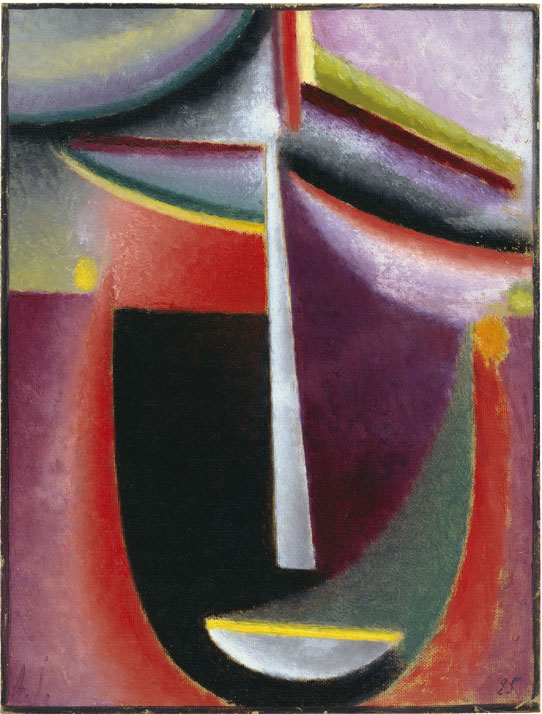
Alexej von Jawlensky, Abstrakter Kopf: Mysterium, 1925; bought from the exhibition "Neue Deutsche Malerei", Kunsthaus Zürich
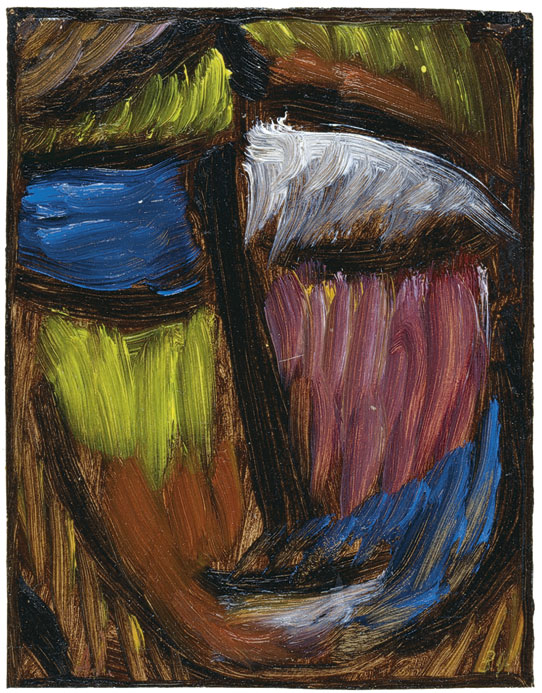
Alexej von Jawlensky, Meditation N. 30, 1934; the artist’s Christmas gift to the collector.
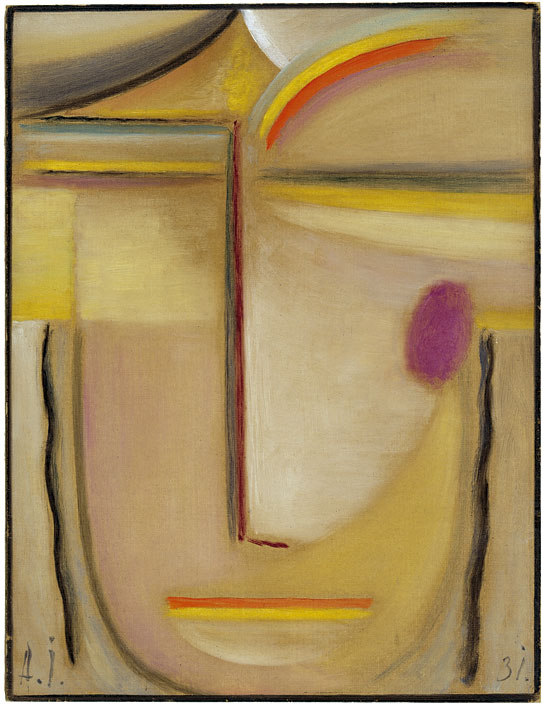
Alexej von Jawlensky, Abstrakter Kopf: Gold und Rosa, 1931; bought at the exhibition "Neue Deutsche Malerei", Kunsthaus Zürich.
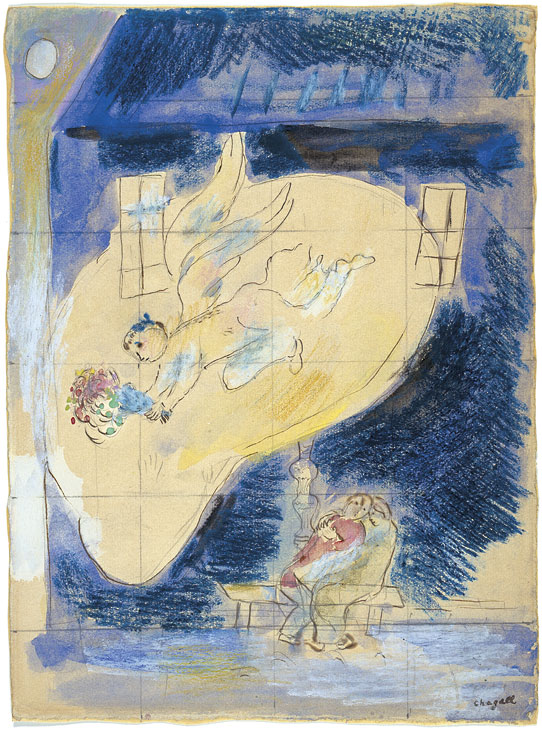
Marc Chagall, Die Wolke, um 1927; gift from the artist, probably as thanks for the successful exhibition in the Leicester Gallery in London (April-May), which the collector had arranged. In a letter from 16 June Chagall thanks Im Obersteg: “Yes, the exhibition in London was a great success and there was even sold something. I have you to thank for that.”
On 27 January the correspondence with Ernst Ludwig Kirchner began that lasted to 1937, the contents of which is about Kirchner’s exhibition at the Kunsthalle Basel.
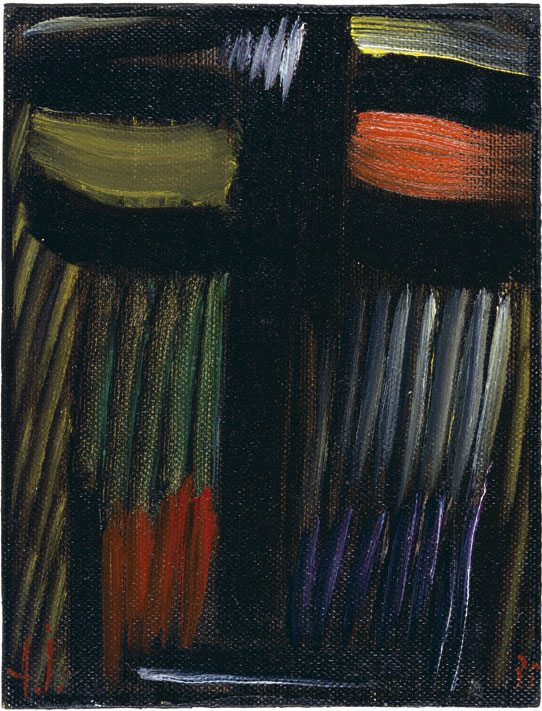
Alexej von Jawlensky, Meditation N. 133, 1935; the artist’s Easter gift to Marianne Im Obersteg with a dedication on the back: “To the dear and hopefully soon quite-well-again Duschka”.
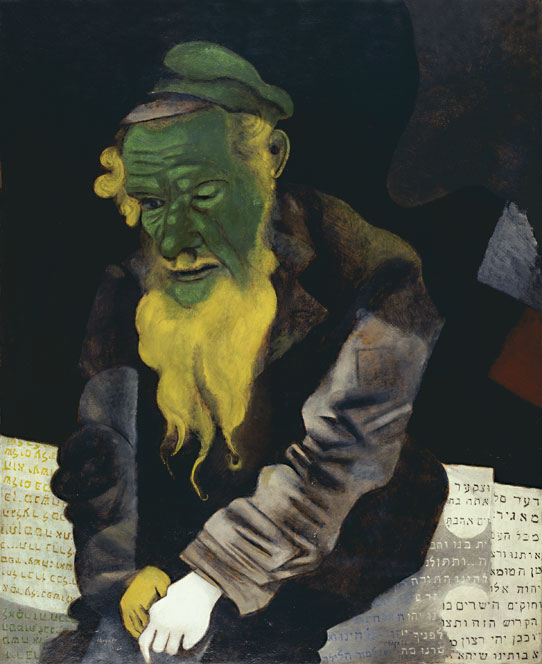
Marc Chagall, Der Jude in Grün, 1914; bought from the artist in exchange for Die Hochzeit, 1910.
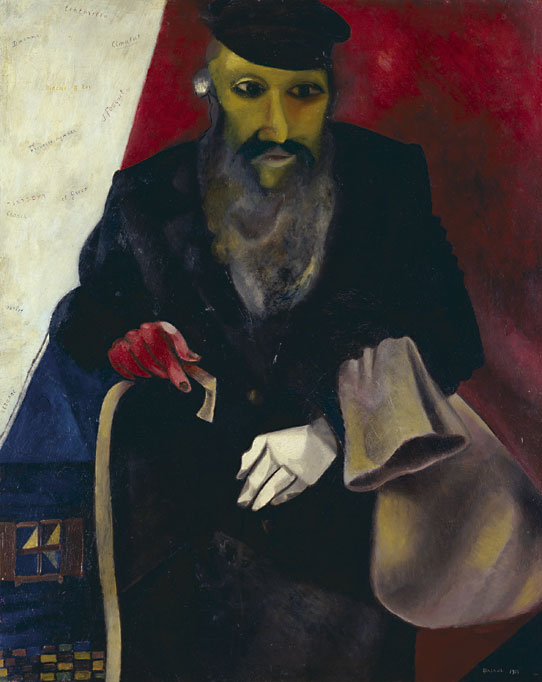
Marc Chagall, Der Jude in Rot, 1914; bought from A. Kagan-Chabchay, Paris.
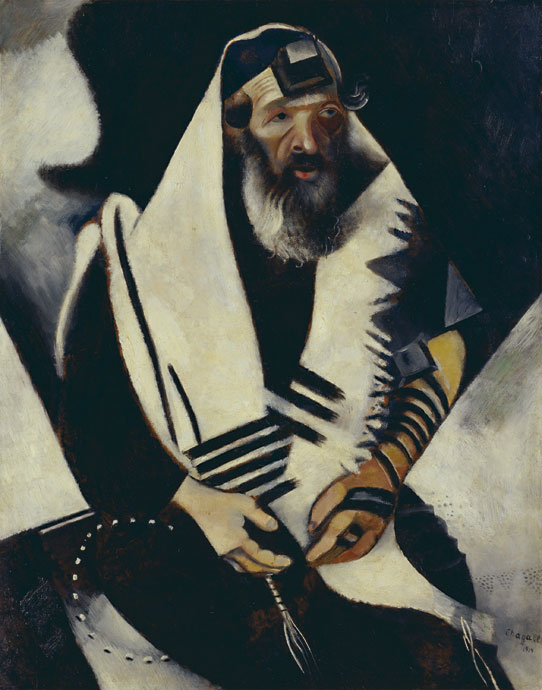
Marc Chagall, Der Jude in Schwarz-Weiss, 1914; bought from A. Kagan-Chabchay, Paris. Negotiations for the purchase of the Chagall work group were drawn out over almost four months when Karl Im Obersteg discovered that Der Jude in Schwarz-Weiss existed in two later variations. In the early 1920s in Paris, Marc Chagall had painted replicas of single works owned by Kagan-Chabchay. For this purpose he borrowed the collector’s works and set them up in his atelier. Before his definitive purchase, Karl Im Obersteg wanted to be sure that his work was the original version. After he became convinced this was the case, he bought Chagall’s five canvases from A. Kagan-Chabchay. The three portraits of Jews now brought together in the Im Obersteg Collection had already in the 1930s been considered among Chagall’s first-rate major works.
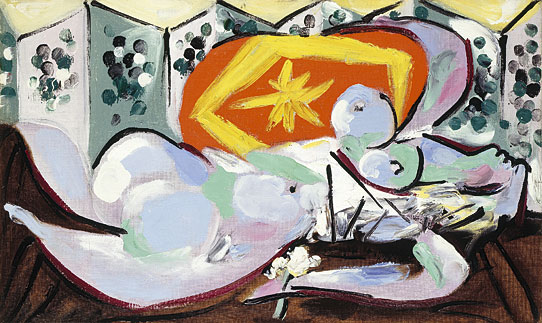
Pablo Picasso, Nu couché, 1934; bought at the Galerie Paul Rosenberg, Paris.
Begin of the correspondence with Wassily Kandinsky. The painter wrote to Karl Im Obersteg, whom he didn’t know, from Paris about an exchange of pictures with his friend Alexej von Jawlensky. The casual correspondence ended already in November 1937.
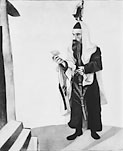
Marc Chagall, Festtag, 1914; bought from A. Kagan-Chabchay, Paris. 1951 sold through the Galerie Rosengart in Lucerne, since 1972 at the Kunstsammlung Nordrhein-Westfalen in Düsseldorf.

Marc Chagall, Über Witebsk, 1914; bought from A. Kagan-Chabchay, Paris. The painting was then sold again in 1951 by the Galerie Rosengart in Lucerne and is since 1970 in the Art Gallery of Ontorio, Toronto (gift of Sam and Ayala Zacks).
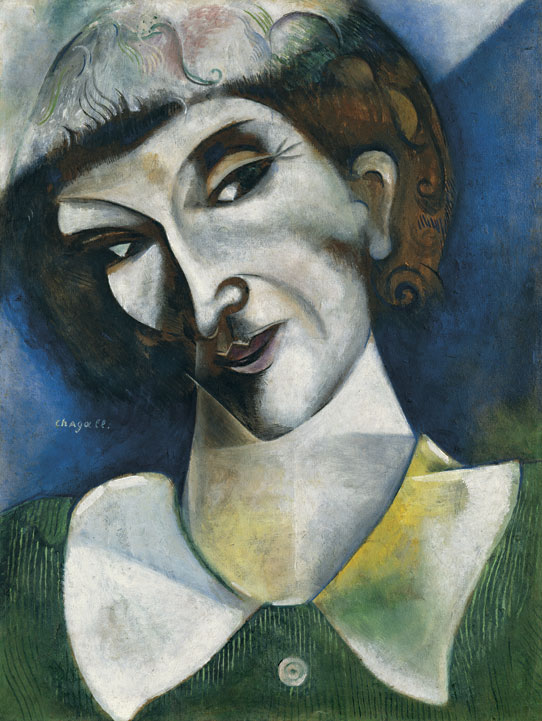
Marc Chagall, Selbstbildnis, 1914; bought from A. Kagan-Chabchay, Paris.
On 15 June Marianne Im Obersteg died after a long illness in Basel.
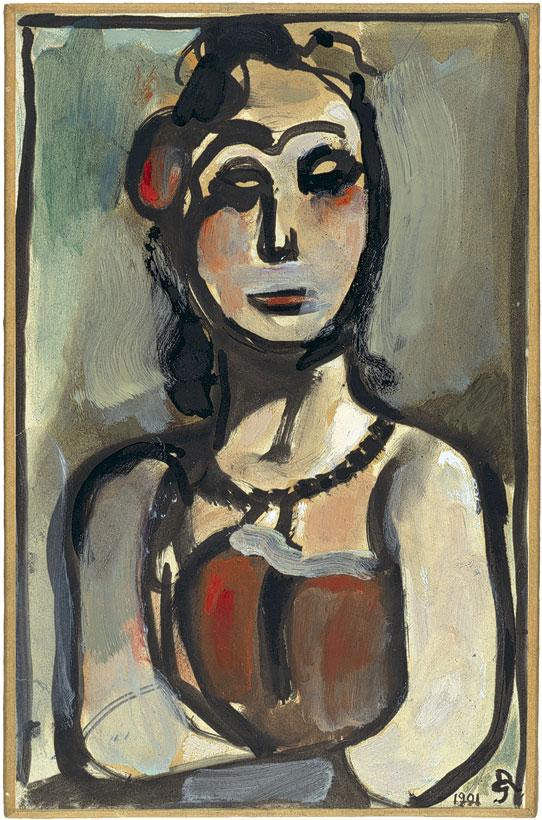
Georges Rouault, Jeune fille (buste), 1910-19; bought at Galerie Zak, Paris.
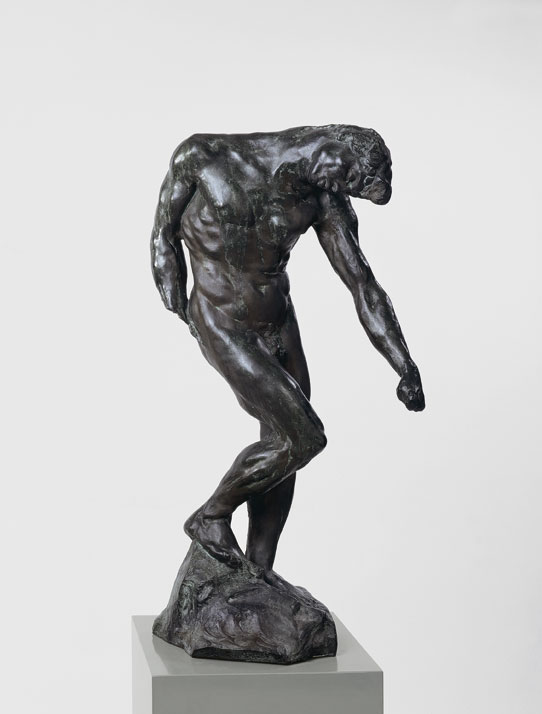
1938 Auguste Rodin, La petite ombre, 1880; bought at Eugène Rudier, Paris, son of the caster, Alexis Rudier. The Kunstmuseum Basel acquires on the recommendation of Im Obersteg La grande ombre as well as Rodins monumental head Pierre de Wissant, tête colossale, 1808/09.
Karl Im Obersteg, in his capacity (since 8 July 1939) as a member of the Art Commission of the Public Art Collection, accompanied the director of the Kunstmuseum Basel, Georg Schmidt, to the auction of “degenerate” art at the Galerie Fischer in Lucerne. He did not make any purchases for his own collection.
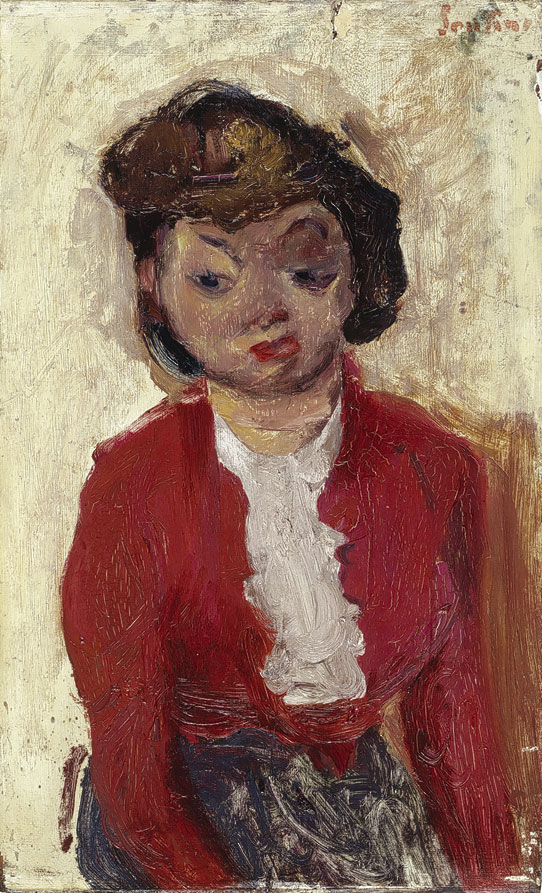
Chaïm Soutine, La jeune Anglaise, around 1934; bought at Mme Benezit, Paris.